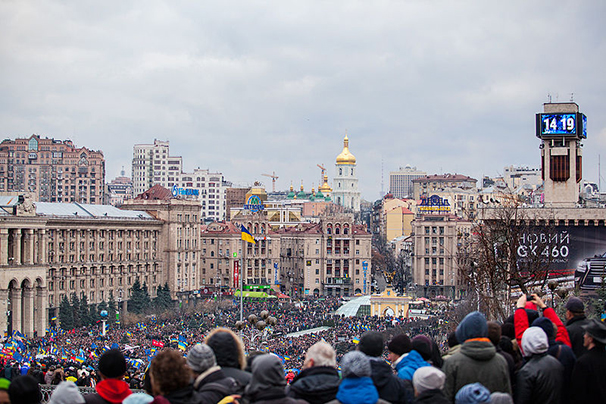
NYU’s Social Media and Political Participation Lab has monitored social media outlets and conducted research on their role in the ongoing Euromaidan protests in Kiev, Ukraine since they began in November.
Ukraine has received international media attention for the past few months since demonstrations erupted in response to President Viktor Yanukovych’s foreign policy tactics, corruption and police violence.
Ukraine has also been prominently featured on the Twitter, Facebook and other social media feeds of many people with ties to Eastern Europe, including CAS freshman Maria Arievitch.
“I definitely have seen a lot of information being spread on the Internet about the protests and the culmination of events in Kiev,” Arievitch said. “Social media has become the platform that shows that people still do care about global issues.”
Pablo Barberá, a doctoral student studying politics and a researcher at SMaPP, said the methods SMaPP uses include identifying popular tweets mentioning Ukraine, as well as monitoring posts on the Euromaidan Facebook page.
“An in-depth quantitative and qualitative analysis of such a vast dataset has provided us with a privileged view of how protesters are using social media,” Barberá said.
So far, research findings indicate that Ukrainians use social media to communicate with two intentions in mind — to organize help when needed and to motivate other people to join the protest.
“Among the most popular tweets and Facebook posts, we often find information about the logistics of the protest, such as where volunteers are needed, where medical assistance is available and where police [are] located,” Barberá said. “At the same time, social media is a powerful tool to create crowdsourced narratives, illustrated with images and stories about the protest, that can succeed at recruiting new protesters and drawing the attention of the international community.”
The pattern of using social media for these purposes is consistent with previous SMaPP research on mass demonstrations, including Turkey’s Gezi Park protests in early June.
As a result of recent events, social media have often been under the spotlight for their role in helping to both initiate demonstrations and contribute to their success.
Social media have also served to keep Ukrainians living in America, such as GLS freshman Maryna Prykhodko, updated on events back home.
“I got a Twitter [account] in order to follow the movement,” Prykhodko said. “Without social media, the communities outside Ukraine could not function.”
Prykhodko said social media have played a significant role in raising awareness about the reality of the situation in Ukraine.
“Media was controlled by the government, and so there was no way the news would be out without social media,” Prykhodko said.
She explained that without people utilizing social media, the protest in Independence Square against the Ukrainian government would have ended much more negatively.
For many like Prykhodko, social media will continue to play a significant role in the Euromaidan protests.
A version of this article appeared in the Monday, Feb. 25 print edition. Marita Vlachou is a contributing writer. Email her at [email protected].






















































































































































